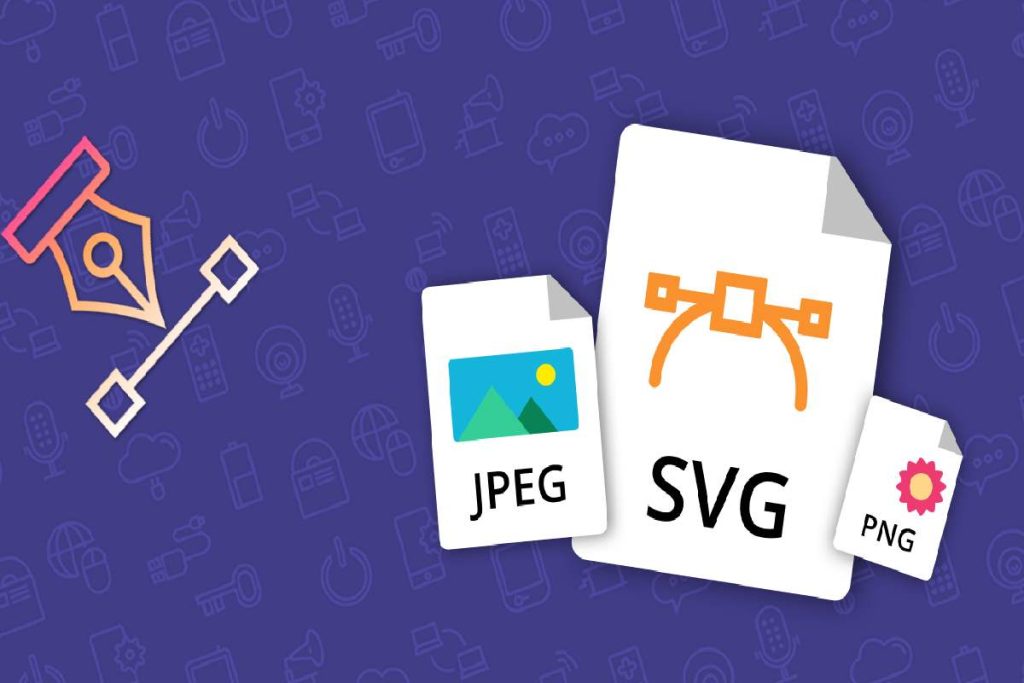In logo design, file format isn’t just a technical detail—it’s a strategic choice that can make or break how your design performs across various mediums. Many creatives start with a raster image, often a JPG file shared by a client, pulled from an old scan, or exported during early design iterations. However, to ensure consistent quality across websites, print, packaging, and merchandise, converting that flat image into a vector format like SVG is essential.
That’s where Creative Fabrica Studio’s JPG to SVG conversion tool comes into play. This online tool turns static, pixel-based images into scalable, professional-grade vector files—without the need for complex software or manual vector tracing.
In this guide, we’ll break down the pros and cons of JPG versus SVG for logo work, what each format is intended for, and how converting to vector ensures your logo becomes more than just a pretty image—it becomes a powerful brand asset.
Table of Contents
What You Need to Know About JPG
JPG (or JPEG), short for Joint Photographic Experts Group, is one of the most common image formats used online and in digital media. It’s a raster format, meaning it represents visuals using a grid of pixels. It’s especially effective for rich, detailed images like photographs.
Why JPGs Are Frequently Used for Logos:
- Highly compatible: JPG files can be opened on virtually any device or browser.
- Small file size: Their compression keeps them lightweight for web use.
- Handles gradients and textures: Logos with photographic elements or soft shading often look good in JPG.
Because of its ease of use, JPG is often the go-to when exporting logos—especially in informal handoffs or early drafts. However, it has limitations, particularly when it comes to flexibility. JPGs are resolution-bound, which means scaling them up can result in a blurry, pixelated image. They also don’t support transparent backgrounds, making them tricky to overlay on other designs or materials.
Why SVG is the Ideal Format for Logos
SVG, or Scalable Vector Graphics, is a file format that uses XML code to describe images through paths, shapes, and coordinates—no pixels involved. The result? Crisp, editable graphics that scale perfectly at any size.
The Key Benefits of Using SVG for Logos:
- Always sharp: From tiny favicons to massive billboards, your logo remains crystal clear.
- Transparency support: SVG files handle transparent backgrounds with ease.
- Compact for simple designs: Clean, minimal logos often result in smaller SVG file sizes than JPG.
- Fully editable: Open and tweak in vector tools like Illustrator or Inkscape.
- Built for the web: Modern browsers natively support SVG, and the format scales beautifully across responsive websites.
SVG’s versatility makes it essential for serious brand development. Whether you’re designing for a screen, a storefront, or a stitched label, SVG ensures your logo works flawlessly across formats and scales.
JPG vs SVG: What’s the Real Difference?
Imagine receiving a logo in JPG format—maybe a scan from old business stationery or a file pulled from an outdated website. It might look okay on a screen, but try scaling it for signage or embroidery, and it instantly shows its flaws. That’s where converting to SVG becomes not just helpful, but crucial.
The vectorization process converts pixel-based data into clean paths and shapes, allowing for endless customization. Once converted, you can recolor, resize, and export your logo in other vector-friendly formats like PDF, AI, EPS, or DXF.
As brand strategist Lyndsey Drooby puts it:
“A successful logo isn’t just about appearance—it’s about adaptability. If your logo can’t scale or print properly, it’s not complete. A vector version turns your design into a tool, not just a picture.”
That’s the real takeaway. JPGs are static snapshots. SVGs are responsive systems.
How to Convert JPG to SVG Easily
Thanks to modern tools, converting a JPG to SVG doesn’t have to be a hassle. With services like Creative Fabrica’s JPG-to-SVG converter, you can upload your image and get a ready-to-use vector version in moments.
Who Benefits Most From This Conversion?
- Designers working with legacy logos
- Clients who only have raster versions
- Crafters creating files for laser cutters or vinyl machines
- Web developers embedding scalable brand visuals
For best results, optimize your JPG before conversion—remove noisy backgrounds, increase contrast, and simplify the image where possible. A cleaner source image means a cleaner final vector.
Why File Format Matters More Than You Think
File format might not be the most glamorous part of logo design, but it plays a huge role in how your logo performs out in the real world. It impacts visual quality, consistency, and how seamlessly your design can be integrated across different platforms.
By converting a JPG logo into SVG, you’re unlocking a world of flexibility, control, and longevity. Whether you’re handing off brand assets to a client or preparing your own logo for every possible application, vectorization ensures your design stays professional, sharp, and future-proof.
